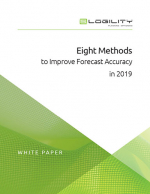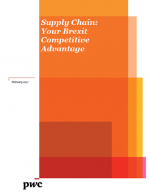Eight Methods that Improve Forecasting Accuracy
This whitepaper shares best methods on how to forecast demand accuracy.
Typically, a variety of forecasting methods are applicable to any particular supply chain scenario. Smart supply chain planners use multiple forecasting methods tuned to perform well at different phases of the product life cycle, chosen to best exploit the available historical data and degree of market knowledge.
The key is to pick the most effective and flexible forecasting models, blend their best features, and shift between them as needed to keep forecast accuracy at its peak.
Advanced forecasting systems use a combination of qualitative and quantitative techniques to generate reliable forecasts.
Attribute-based methods that use demand profiles are often suited to new product introduction and end of product life cycles, at times when reliable historical demand data is lacking or the available data is less relevant.
At the more mature stages of the product life cycle, five time-series forecasting methods come into play, including modified Holt, Holt-Winters, moving average, and intermittent for low demand, whether patterned or unpatterned. These models are used to create retrospective forecasts that cover prior periods (typically three years) of documented demand.
The forecasts are then matched to actual demand history to determine which one best fits the real-world data. The best-fit winner is used to create an objective base forecast.
At this point, planners may include more qualitative calculations based on personal knowledge and experience with intangible market factors.
Causal methods are used throughout the life cycle to adjust forecasts in anticipation of promotional events.
Causal forecasting methods allow planners to predict how discounting and other promotional factors will affect volume, and layer the impact of these events on top of the underlying base forecast.
Finally, Derived models can be used to create a Parent-Child relationship in which forecasts for closely related products are driven as a percentage of the forecast for a ‘leader’ product.
This ensures that when the forecast is modified for the ‘parent’ all the ‘child’ forecasts would be updated accordingly.
What’s Related




Favorites





